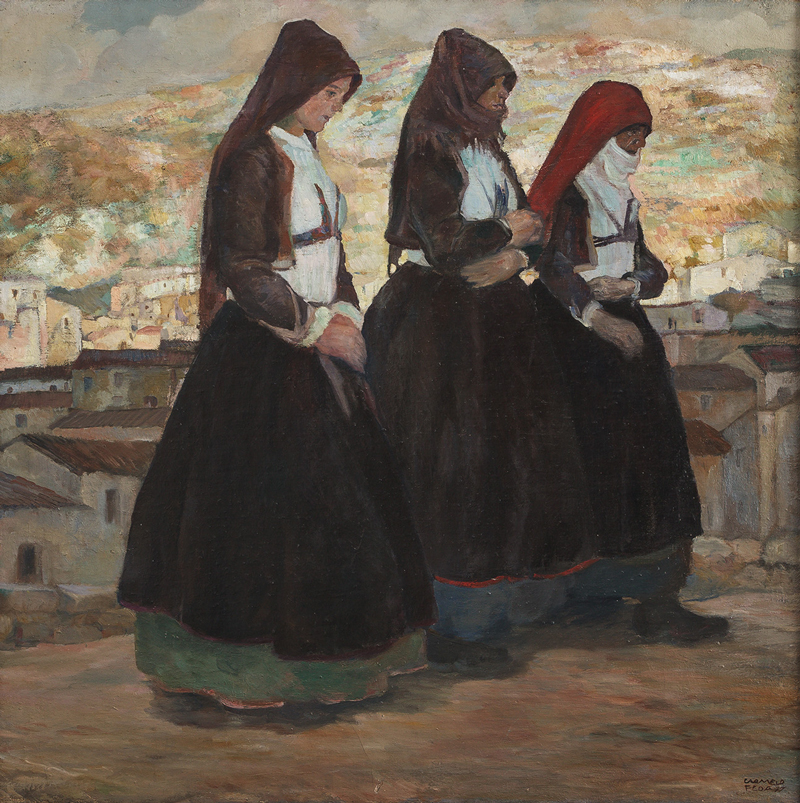Carmelo Floris, Vespero or Le tre età, oil on canvas, 1930, on loan from C.C.I.A.A. Nuoro
Vespero is one of the most important works by Carmelo Floris, one of the most representative figures of the 20th-century Sardinian art scene.
A painter of emotion and soul, Floris does not merely depict faces: he interprets them, gazes through them, turning them into bearers of universal emotions and states of mind, successfully conveying the inner world of his subjects.
Unlike other artists of his time, he interprets folklore in a distinct way, distancing himself from rhetorical or documentary representation. For him, tradition is everyday life, made up of men and women with a strong sense of identity.
In Vespero, the protagonists are three female figures, symbols of the three stages of life: old age, adulthood, and youth. Leading the procession is the elderly woman, recognizable by her red headscarf, who appears to guide the way with a steady and confident step, like someone who has already journeyed through time.
She is followed by a mature woman, in a more reserved, almost reflective pose, while the young woman, further behind, brings up the rear—still distant from what lies ahead.
The background features a gently sketched hill, rendered with vibrant, luminous brushstrokes that suggest vegetation at sunset. In the distance, the cubic silhouettes of houses can be seen—essential yet recognizable, almost hinting at a destination. The scene is imbued with an atmosphere of calm and introspection: the women appear to be returning home at dusk, enveloped in a silence that is both dense and poetic.
Floris does not dwell on the details of clothing. His focus lies elsewhere—on the psychology of his characters, on the traits of the soul that emerge through their gaze or posture.
Rita Moro

